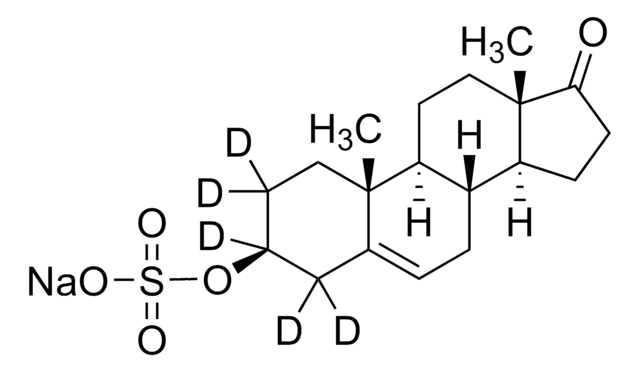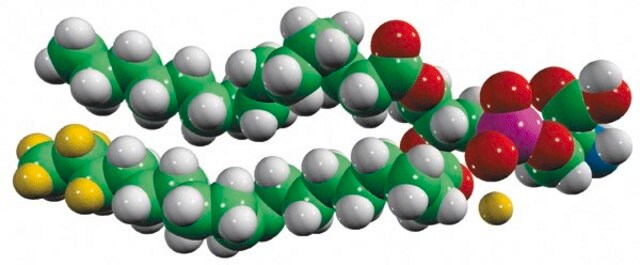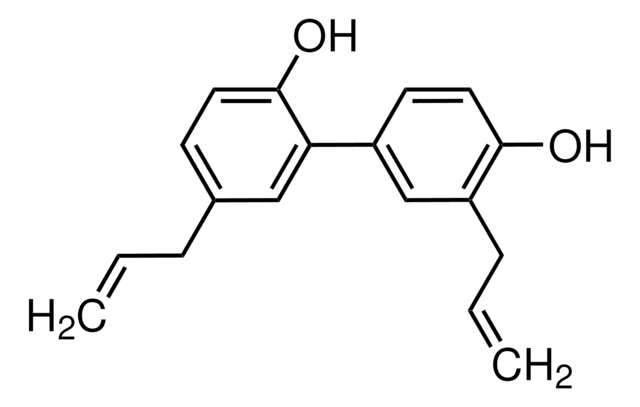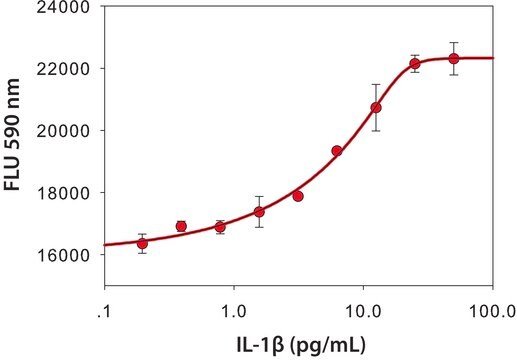Wichtige Dokumente
LM1302
Avanti
17:0-20:4 PS
Avanti Research™ - A Croda Brand LM1302, methanol solution
Synonym(e):
1-heptadecanoyl-2-(5Z,8Z,11Z,14Z-eicosatetraenoyl)-sn-glycero-3-phospho-L-serine (ammonium salt)
About This Item
Empfohlene Produkte
Form
methanol solution
Verpackung
pkg of 1 × 1 mL (LM1302-1EA)
Hersteller/Markenname
Avanti Research™ - A Croda Brand LM1302
Konzentration
~10 μg/mL (Refer to C of A for lot specific concentration.)
Versandbedingung
dry ice
Lagertemp.
−20°C
SMILES String
[H][C@@](COP([O-])(OC[C@](C([O-])=O)([H])[NH3+])=O)(OC(CCC/C=C\C/C=C\C/C=C\C/C=C\CCCCC)=O)COC(CCCCCCCCCCCCCCCC)=O.[NH4+]
InChIKey
PVYYHCZONIFDMV-SPTHKXBTSA-N
Allgemeine Beschreibung
Anwendung
- in lipid extraction from isolated pure mitochondria for mass spectrometry (MS) analysis
- for lipid quantification/analysis using liquid chromatography (LC)-MS
- for phospholipid quantification by MS
- in lysophospholipid acyltransferases (LPLAT) assay
- in the preparation of total lipid extracts from lysosome samples by tert-butyl methyl ether (MTBE) lipid extraction protocol for analysis by LC-MS
- for ratiometric quantification of phosphatidylserine (PS) using LC-MS
Biochem./physiol. Wirkung
Verpackung
Rechtliche Hinweise
auch häufig zusammen mit diesem Produkt gekauft
Signalwort
Danger
H-Sätze
Gefahreneinstufungen
Acute Tox. 3 Dermal - Acute Tox. 3 Inhalation - Acute Tox. 3 Oral - Flam. Liq. 2 - STOT SE 1
Zielorgane
Eyes
Lagerklassenschlüssel
3 - Flammable liquids
WGK
WGK 2
Flammpunkt (°F)
49.5 °F - closed cup
Flammpunkt (°C)
9.7 °C - closed cup
Hier finden Sie alle aktuellen Versionen:
Analysenzertifikate (COA)
It looks like we've run into a problem, but you can still download Certificates of Analysis from our Dokumente section.
Wenn Sie Hilfe benötigen, wenden Sie sich bitte an Kundensupport
Besitzen Sie dieses Produkt bereits?
In der Dokumentenbibliothek finden Sie die Dokumentation zu den Produkten, die Sie kürzlich erworben haben.
Unser Team von Wissenschaftlern verfügt über Erfahrung in allen Forschungsbereichen einschließlich Life Science, Materialwissenschaften, chemischer Synthese, Chromatographie, Analytik und vielen mehr..
Setzen Sie sich mit dem technischen Dienst in Verbindung.











